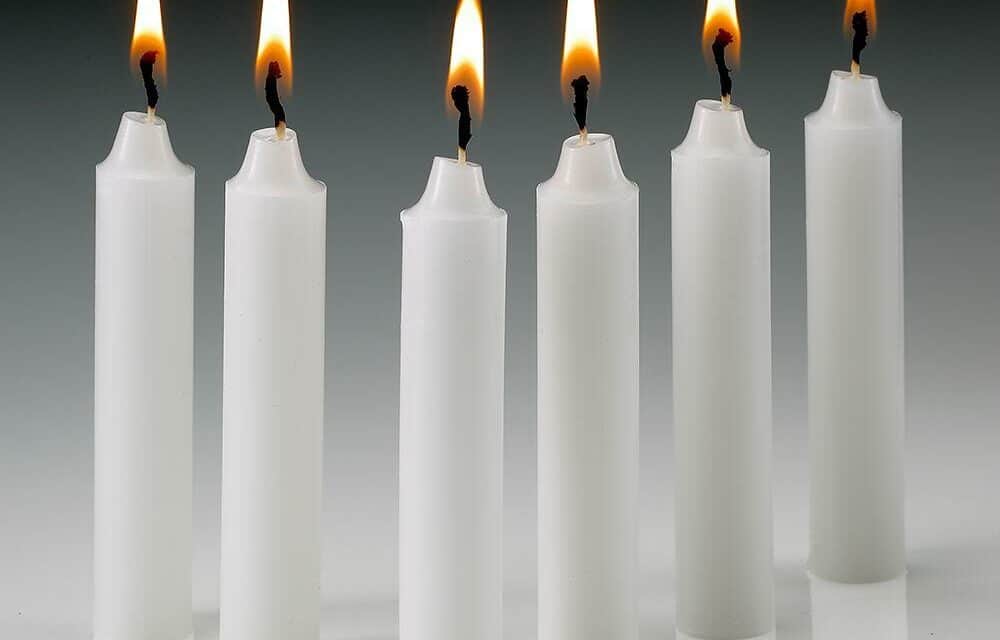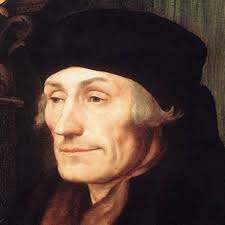This episode of CS is titled is titled “English Candles.”
We’ve spent the last several episodes looking at the Reformation & Counter-Reformation in Europe. In this episode we’ll take a look at how the Reformation unfolded, specifically in England.
The story of the Church in England is an interesting one. The famous, or infamous, Henry the VIII was king of England when Luther set fire to the kindling of the Reformation. Posturing as a bulwark of Catholic orthodoxy, Henry wrote a refutation of Luther’s position in 1521 titled “Defense of the Seven Sacraments” and was rewarded by Pope Leo X with the august title, Defender of the Faith. Ironic then that only about a decade later, Henry would hijack the church, officially ousting the Pope as head of the Church IN England and making himself head of the Church OF England.
What makes the story of these years in England so interesting is the marital & political shenanigans Henry VIII played. The intrigues played out for the thrones of Spain, France & England all make for the best drama and most people don’t realize that so many of the famous names of history all lived right at this time and knew each other, at least by reputation. If the story was a movie dreamed up in Hollywood, most would consider it too far-fetched.
Without getting into the minutiae of the details of Henry’s multiple marriages, it was his lust for power & desire to produce a son & heir that motivated him marry, divorce, re-marry and do it all over again. Henry persuaded the Pope to allow him to marry his sister-in-law, that is, his dead brother’s wife, Catherine of Aragon, herself the daughter of Queen Isabella & King Ferdinand of Spain, sponsors of Christopher Columbus. Catherine gave Henry a daughter named Mary but no sons. So Henry put her aside and married his mistress, the vivacious & opinionated Anne Boleyn.
In order to set Catherine aside so he could wed Anne, Henry had to persuade the Pope, who had taken some persuading to allow him to marry Catherine in the first place, to annul that marriage, saying he ought never have been allowed to marry her in the first place. The archbishop of Canterbury Thomas Cranmer was employed by Henry to put pressure on Rome to grant the annulment. But Pope Clement VII wouldn’t budge. So in 1531, Henry announced to the clergy they were from then on to look to him as the head of the Church in England. It’s at that point we may say that the Church IN England, became the Church OF England.
For the next few years, there was effectively little difference between Roman Catholicism and what later came to be called Anglicanism. But under Thomas Cranmer’s guidance, the Church of England began a halting process of departure from its Roman past.
It seems this departure can be assigned in part to Anne Boleyn. A woman of astute intellect & firm convictions, she found much merit in the Reformed position and had a hand in seeing Thomas Cranmer appointed as Archbishop of Canterbury.
Cranmer is an interesting figure. He seems in his early years to vacillate in his opinions and comes off as being anything but the stalwart bulldog of protestant ideals, as a Luther or Calvin. Yet, he went to the stake at the end of his life rather than recant his most dearly held beliefs. And what he did in the Church of England was truly remarkable.
Once the break with Rome came, Cranmer quietly set about to install the Reformation ideas of Calvin in England. He didn’t really do much while Henry VIII sat the throne but as soon as his reform-minded son Edward became king, he went to work in earnest.
Cranmer was born in Nottinghamshire and attended Cambridge, where he was ordained a priest. He threw himself into his studies, becoming an outstanding theologian, a man of immense, though not original, learning. In 1520, he joined other scholars who met regularly to discuss Luther’s theological revolt in Europe.
Cranmer’s theological leanings remained merely academic until he was drawn into the politics of the day. In August 1529, King Henry VIII happened to be in a neighborhood Cranmer was visiting, and he ended up conversing with the king. Henry was trying to figure out how to divorce Catherine so he could wed Anne Boleyn. Impressed with Cranmer’s reasoning, Henry commanded Cranmer to write a treatise backing the king’s right to divorce and then made Cranmer one of his European ambassadors.
It was in this capacity that Cranmer made a trip to Germany, where he met the Lutheran reformer Andreas Osiander, and his niece, Margaret. Both Osiander’s theology and niece so appealed to Cranmer, despite his vow to celibacy, he married Margaret in 1532. Because of the complex political situation in England, he kept this a secret.
In August 1532, the aged archbishop of Canterbury died, and by March of the next year, Cranmer was consecrated as the new archbishop. Cranmer immediately declared the king’s marriage to Catherine void & the king’s previously secret union w/Anne Boleyn valid.
Cranmer advocated the policy of royal absolutism, or what is popularly known as The Divine Right of Kings. Cranmer said his primary duty was to obey the king, God’s chosen, to lead his nation and Church. Time and again in Henry’s rocky reign, Cranmer was ordered to support religious policies of which he personally disapproved, and he always obeyed the king. And for this, Cranmer has been labeled a vacillator, a waffler – a leader of uncertain loyalty and fidelity to the Lord. Let’s hold off judging that judgment till we see his end.
In 1536, he became convinced, he said, by questionable evidence, that Anne had committed adultery, and he invalidated the marriage. In 1540, he ruled Henry’s proposed marriage to Anne of Cleves was lawful—and when Henry sought a divorce from her just 6 months later, Cranmer approved it on the grounds the original marriage was unlawful!
We’d be wise to be careful of assigning the archbishop the title of lackey. Yes, his flip-flopping on Henry’s marital life is distressing, but given what we know about the King, what would have happened if he’d opposed his wishes? He’d have quickly been shorted by about 9 inches and Henry would have appointed a replacement bishop who gave him what he wanted. Cranmer had important work to do in reforming the Church of England and understood he was uniquely positioned to do it. Yeah, Henry VIII was a piece of work. But Cranmer was installing reforms in the Church that would make sure future kings couldn’t get away with what Henry was getting away with. Though he bent to the king’s will regarding his marital state, time and again, Cranmer alone of all Henry’s advisers pleaded for the lives of people who fell out of royal favor, like Sir Thomas More, Anne Boleyn, and Thomas Cromwell. He even publicly argued against Henry’s Six Articles, which were aimed at moving England back into the Roman Church. Then, in an apparent sign of weakness, when the Six Articles were approved by Parliament, he went along with the king’s policies. But again. What else could he do?
Some would say he ought to have stood strong, like Luther at the Diet of Worms. But if he had, it’s debatable if the Church of England would have become the Anglican Church. And lest we assume that Henry was just an tyrannical spoiled brat who happened to be king, he intervened on Cranmer behalf when court politics threatened the archbishop’s position and life. It was Cranmer Henry asked for on his deathbed.
With Henry’s death & his sons Edward VI ascension to the throne in 1547, Cranmer’s time arrived. The young king’s guardian, Edward Seymour, began to make the Church of England determinedly Protestant. Cranmer took the chief role in directing doctrinal matters. He published his Homilies In 1547, which required all clergy to preach sermons emphasizing Reformed doctrine. He composed the first Book of Common Prayer which was only moderately Protestant, in 1549, then followed it up in 1552 by a 2nd edition that was more clearly Protestant. Cranmer also produced the Forty-Two Articles a year later. This was a set of doctrinal statements that moved the Church of England even further in a Reformed, and I mean Calvinist direction.
These documents became critical to the formation of Anglicanism, and the Book of Common Prayer (BCP), though revised over the years, still retains Cranmer’s distinctive stamp and is used by millions of Anglicans worldwide.
When Edward VI died in 1553, Cranmer supported his cousin, the Lady Jane Grey as the new sovereign. She was even more reform minded than Edward had been. While monarch, Edward had changed the rules of succession to ensure she’d receive the crown, and his older half-sister Mary Tudor, as the daughter of Catherine of Aragon, a staunch Roman Catholic, from gaining the throne. But Lady Jane Grey was deposed in only 9 days, and Mary triumphantly entered London.
Parliament immediately repealed Henry VIII and Edward VI acts and reintroduced the pro-Catholic heresy laws. Mary’s government began a relentless campaign against Protestants. Cranmer was charged with treason and imprisoned in November 1553. After spending nearly 2 years in prison, Cranmer was subjected to a long, tedious trial. The foregone verdict was reached in February 1556, and in a ceremony carefully designed to humiliate him, Cranmer was degraded from his church offices and handed over to be burned at the stake. He was just one of thousands of Protestants to know Queen Mary’s fury, earning her the title Bloody Mary.
Cranmer’s long imprisonment and harsh treatment combined to weaken his resolve. Hoping to avoid the stake, he became convinced he should submit to a Catholic ruler and repudiate his reforms. He signed a document that said, “I confess and believe in one, holy, catholic visible church; I recognize as its supreme head upon earth the bishop of Rome, pope and vicar of Christ, to whom all the faithful are bound subject.”
Even with this confession in hand, the Royal Court & Parliament believed Cranmer had to be punished for the havoc he’d wreaked on the Church. The plan was still to burn him at the stake—but he’d be allowed to make one more profession of his Catholic faith and so redeem his soul though his body would perish in the flames.
On the night before his execution, Thomas Cranmer was seated in an Oxford cell before a plain wooden desk, weary from months of trial, interrogation, and imprisonment, trying to make sense of his life. Before him lay the speech he was to give the next morning, a speech that repudiated his writings that had denied Catholic teaching. Also before him was another speech, in which he declared the pope “Christ’s enemy and antichrist.”
Which would he give on the morrow?
The next morning he was led into a church, and when it was his turn to speak, he drew out a piece of paper and began to read. He thanked the people for their prayers, then said, “I come to the great thing that troubles my conscience more than any other thing that I ever said or did in my life.” Referring to the recantations he had signed, he blurted out, “All such bills which I have written or signed with my own hand are untrue.”
Loud murmurs sped through the congregation, but Cranmer continued, “And as for the pope, I refuse him as Christ’s enemy and antichrist, with all his false doctrine. And as for the sacrament—” But no more words were heard by the crowd because Cranmer was dragged from the stage out to the stake. The fire was kindled and quickly the flame leapt up. Cranmer stretched out his right hand, the one who’d written the previous recantation, into the flame and held it there as he said, “This hand has offended.” He died with the words of many of the martyrs, “Lord Jesus, receive my spirit!”
Within just 2 years, Elizabeth I ascended the English throne and moved the church back in a Protestant direction, revising Cranmer’s 42 Articles to 39, and adopting his Book of Common Prayer as the guide to worship. Today Anglicanism & its New World counterpart in Episcopalianism, is the expression of faith for 50 million worldwide.[1]
As we end this episode, I want to mention 2 more who lost their lives in Bloody Mary’s purge; Nicolas Ridley & Hugh Latimer.
Ridley was Thomas Cranmer’s chaplain when Cranmer was Archbishop of Canterbury. He eventually became the bishop of London. He helped Cranmer write the Book of Common Prayer. Ridley was instrumental in altering the interior of the churches of England. He replaced the stone altars with simple wooden tables for the serving of Communion. He shifted the work of priests from sacramental & sacerdotal work inside the church to pastoral work outside it.
Hugh Latimer started out as a passionate preacher of Catholicism. When he received a degree in theology in 1524, he delivered a lecture assailing the German Lutheran heir to Luther’s legacy, Philip Melanchthon, for his high view of Scripture.
Among Latimer’s listeners was Thomas Bilney, leader of the Protestants at Cambridge. After the lecture, Bilney asked Latimer to hear his confession. Believing his lecture had converted the evangelical, Latimer readily agreed. The “confession,” however, was a stealthily worded sermon on the comfort and confidence the Scriptures can bring. Latimer was moved to tears, and to Protestantism.
Latimer’s sermons then targeted Catholicism and social injustice. He preached boldly, daring in 1530 to give a sermon before King Henry VIII that denounced violence as a means of protecting God’s Word. For this he won the king’s respect.
He became one of Henry’s chief advisers after the king’s break with Rome. Appointed bishop of Worcester, he supported Henry’s dissolution of the monasteries. However, when he opposed the Henry’s retreat from Protestantism in the Six Articles, he was put under house arrest for 6 years.
Freed during the reign of Edward VI, he flourished as one of the Church of England’s leading preachers. But with the ascension of Mary, he was again imprisoned, tried, and along with Ridley & Cranmer, condemned to death.
According to Foxe’s Book of Martyrs, Ridley arrived at the field of execution first. When Latimer arrived, the 2 embraced and Ridley said, “Be of good heart, brother, for God will either assuage the fury of the flame, or else strengthen us to abide it.” They both knelt and prayed before listening to an exhortation from a preacher, as was the custom before an execution for heresy.
A blacksmith wrapped an iron chain around the waists of Ridley and Latimer. When the wood was lit, Latimer said, “Be of good comfort, Mr. Ridley, and play the man! We shall this day light such a candle, by God’s grace, in England, as I trust never shall be put out.”
As the fire rose Latimer cried out, “O Father of heaven, receive my soul!” and he died almost immediately. Ridley however, hung on, with most of his lower body having burned before he passed from this earth into Heaven’s waiti ng arms.[2]
[1] Galli, M., & Olsen, T. (2000). 131 Christians everyone should know (372–374). Nashville, TN: Broadman & Holman Publishers.
[2] ibid





